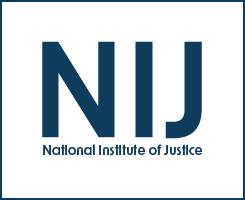Procedures
Fileset: Procedure for transforming 3D computed tomography (CT) skull and face models to a common orientation
Documentation for SAS-Compatible LOGIT, TOBIT and MVPROBIT Procedures
Multi-Agency Investigative Team Manual
High-throughput LC-PDA Method for Determination of Δ9-THC and Related Cannabinoids in Cannabis Sativa
SURVEYING EX-PRISONERS - PROCEDURES AND PITFALLS
Development of new cocaine hair testing guidelines: investigation of decontamination protocols, damage/adulteration evaluation, and cosmetic treatment impact
Forensic Analysis of Salvia Divinorum Using Multivariate Statistical Procedures. Part II: Association of Adulterated Samples to S. Divinorum
Forensic analysis of Salvia divinorum using multivariate statistical procedures. Part I: discrimination from related Salvia species
Meeting National Safety Council Recommendations: Accurate Rapid Tests and Laboratory Confirmation Procedures for Fentanyl and Prevalent Opioids in Oral Fluid
MeshMonk Open-source large-scale intensive 3D phenotyping
Female Genital Mutilation/Cutting: An Incomplete Picture of a Pressing Global Problem
Improved prevalence data, increased understanding, and collaboration between stakeholders are key elements to mounting an effective response to female genital mutilation.
Domestic Violence and Mandatory Arrest Laws: To What Extent Do They Influence Police Arrest Decisions?
THREE-STAGE ITERATIVE PROCEDURE FOR SPACE-TIME MODELING
Rapid Microfluidic Analysis of a Y-STR Multiplex for Screening of Forensic Samples
Space-Time ARMA Modeling With Contemporaneously Correlated Innovations
Differential Attrition Rates and Active Parental Consent
STARIMA (Space-Time Autoregressive Integrated Moving Average) Model-Building Procedure With Application to Description and Regional Forecasting
Experiment to Enhance the Reporting of Drug Use By Arrestees
Comparison of Estimation Procedures for the Parameters of the Star Model
Cognitive Human Factors and Forensic Document Examiner Methods and Procedures
Adaptation of the DNAse I procedure to the Biomek® NXP robotic platform for more efficient and automated sexual assault sample processing
Legitimacy and Community Cooperation With Law Enforcement
Tom R. Tyler, chair of the New York University psychology department, describes research on profiling and community policing. His research found that citizens of all races show greater respect for law enforcement when they believe officers are treating them fairly. Even citizens who experienced a negative outcome getting a traffic ticket, for example showed higher levels of respect for and cooperation with law enforcement as long as they believed they were not being singled out unfairly.
See the YouTube Terms of Service and Google Privacy Policy


